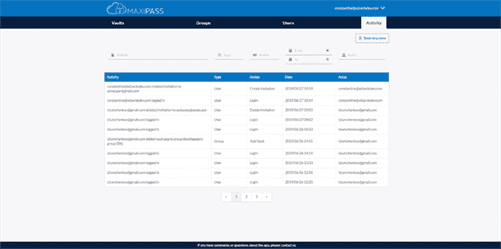Sepetinizde ürün bulunmuyor.
Software development
Advantages of NoSQL Top 12 Advantages of NoSQL
It stores the data in native format, which means that the developer can adapt the format of an application easily. The addition of inexpensive addition of hardware including server and storage makes the cluster more durable and resilient in terms of infrastructure. In NoSQL, the hardware can be upgraded and new clusters can be added into the existing environment with zero downtime. This type of architecture always allows the set of clusters of a database to expand and contract automatically. It can handle the very large and complex nested structure of JSON file efficiently without affecting the performance of an application.
In SQL, you need to modify schemas and backfill data before you can add new data. However, it is also restrictive, as you need a predefined schema for describing your data structure right at the outset, and this structure has to be consistent throughout all your data. This means a lot of preparation in the early stage, and great difficulty in changing the structure later on. It provides you the support of saving data into column rather than the rows. NoSQL databases usually follow the BASE model, which offers more elasticity than the ACID model.
Pros and cons of SQL
This NoSQL model is primarily used for data mining and analytics applications. On the other hand, NoSQL databases are specifically designed for unstructured data which can be document-oriented, column-oriented, graph-based, etc. In this case, a particular data entity is stored together and not partitioned.
- Vendors have been steadily incorporating features into their products to make them more universal.
- They are ideal for applications that require multi-row transactions such as an accounting system or for legacy systems that were built for a relational structure.
- A scale-up is something that the database administrators always rely on.
- Unlike with SQL, their built-in sharding and high availability requirements allow horizontal scaling.
- The general use and acceptance of NoSQL databases has been based primarily on developers who discovered they could develop and modify specific applications fairly easily using NoSQL.
- JSON is used by document databases like MongoDB to transform the data into something far more like code.
- NoSQL databases are gaining popularity and are proving to be a game changer in the industry.
Document-oriented NoSQL databases are especially useful for content management systems and blogs. The most commonly used data format is JSON (JavaScript Object Notation), https://www.globalcloudteam.com/when-to-use-nosql-vs-sql-understanding-the-differences/ which allows for fast exchange of data between applications. Any data that is undetermined in terms of shape or arrangement is considered unstructured.
DATAVERSITY Education
In general, SQL databases can scale vertically, meaning you can increase the load on a server by migrating to a larger server that adds more CPU, RAM or SSD capability. While vertical scalability is used most frequently, SQL databases can also scale horizontally through sharding or partitioning logic, although that’s not well-supported. The scale-out architecture of NoSQL systems provides a clear path to scalability when data volume or traffic grows. Achieving the same type of scalability with SQL databases can be expensive, require lots of engineering, or may not be feasible. NoSQL databases are scalable horizontally, meaning that they use multiple nodes in a cluster to handle increased workloads. This allows data architects to simply scale them by supplementing clusters with additional servers.

NOSQL does address certain limitations of current SQL DBMSs but it doesn’t imply any fundamentally new capabilities over previous data models. Today, many applications are delivered as services, and those services must be available 24/7, accessible from a wide range of devices, and scaled to what can potentially be millions of users. IBM Cloudant is a scalable JSON document database optimized for web, mobile, IoT, and serverless applications. The service is compatible with an open source ecosystem that includes Apache CouchDB, PouchDB, and libraries for the most popular web and mobile development stacks. Companies have found that using a single, relational database for every component of an application has its limitations, especially when better alternatives exist for specific components. Microservices are an attractive option, in part, because they eliminate the need for a single, shared data store for an entire application.
Enable easy updates to schema and fields
As mentioned, ACID is better for businesses and organizations that need to ensure each transaction’s consistency, predictability and reliability. As one can observe, the ACID model secures that a transaction is reliable and consistent. Therefore, databases that follow this model are the best fit for organizations and businesses that cannot risk invalid and interrupted data transactions or any other error (e.g. financial institutions).

Generally, NoSQL databases (can but) are not designed to support JOINs efficiently. Objects can be on different servers in non-relational database systems without being concerned about joining tables from multiples servers. In turn, NoSQL databases follow a dynamic schema for unstructured data. Since it does not require a predefined structure, https://www.globalcloudteam.com/ modifications are easier to execute. Therefore, NoSQL databases have greater flexibility; however, flexibility may also compromise reliability despite the advantages. It is a query language that allows retrieving specific data from databases, and, in that sense, it is designed to access, store and manipulate relational databases.
When to choose a NoSQL database?
Apache HBase is built on top of Hadoop Distributed Files System that provides a way of storing sparse data sets, which is commonly used in many big data applications. Apache Cassandra, on the other hand, has been designed to manage large amounts of data across multiple servers and clustering that spans multiple data centers. It’s been used for a variety of use cases, such as social networking websites and real-time data analytics. They can be helpful in managing semi-structured data, and data are typically stored in JSON, XML, or BSON formats.
Scalability not only gives you more storage space but also much higher performance since many hosts work at the same time. By offering diverse data structures, NoSQL can be applied to data analytics, managing big data, social networks, and mobile app development. A lesser benefit comes from the fact that the relational model eliminates repetitive storage of the same information in multiple places. The transaction rates are growing tremendously in the current trend, hence the data that are being stored are also increased immensely.
In-Memory Databases
In addition, the flexibility and ease of use of their data models can speed development in comparison to the relational model, especially in the cloud computing environment. Sometimes, though, there doesn’t need to be a choice between relational and nonrelational databases. On many occasions, companies have opted for databases that offer a converged model, in which they are able to employ a combination of a relational and nonrelational data models. This hybrid approach offers increased flexibility in handling different types of data, while also ensuring read and write consistency without degrading performance. The term ‘NoSQL’ refers to nonrelational types of databases, and these databases store data in a format that’s different from relational tables.

A relational database like SQL is a great option if you’re looking to build an application structured around a relationship between data tables. SQL also works well when you want to ensure your data is consistent across tables. However, relational databases aren’t always the best choice regarding flexibility or scaling. Relational databases offer many important features that make them aptly suited to enterprise workloads, which is why organizations have been turning to them for so long.
Open-Source, Scale-Out, Cloud-Native NoSQL Database
NoSQL has been getting popularity because of the flexibility and scalability that it offers over the other kinds of databases that are available. It has been designed to perform exceptionally well under any conditions including low-cost hardware. We can simply say that SQL is that structured language, which can be used to create, maintain and manage the data that lies within a database. The description for a database is that it is a structured architecture that has been programmed to organize data, defined by metadata, which ultimately represents the structure. NOSQL means only no SQL (or “not only SQL”) but that doesn’t mean the same as no relational. A relational database in principle would make a very good NOSQL solution – it’s just that none of the current set of NOSQL products uses the relational model.
